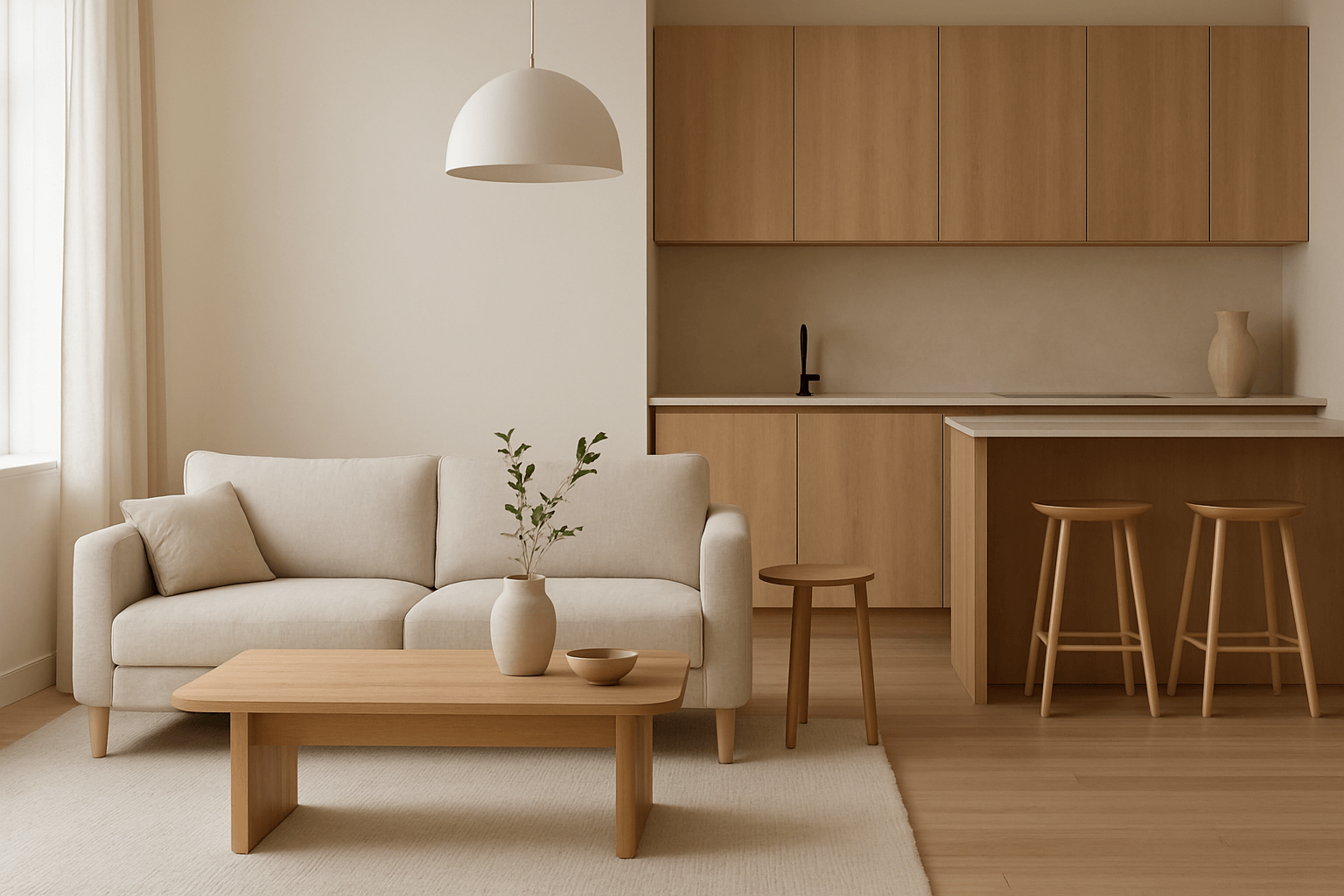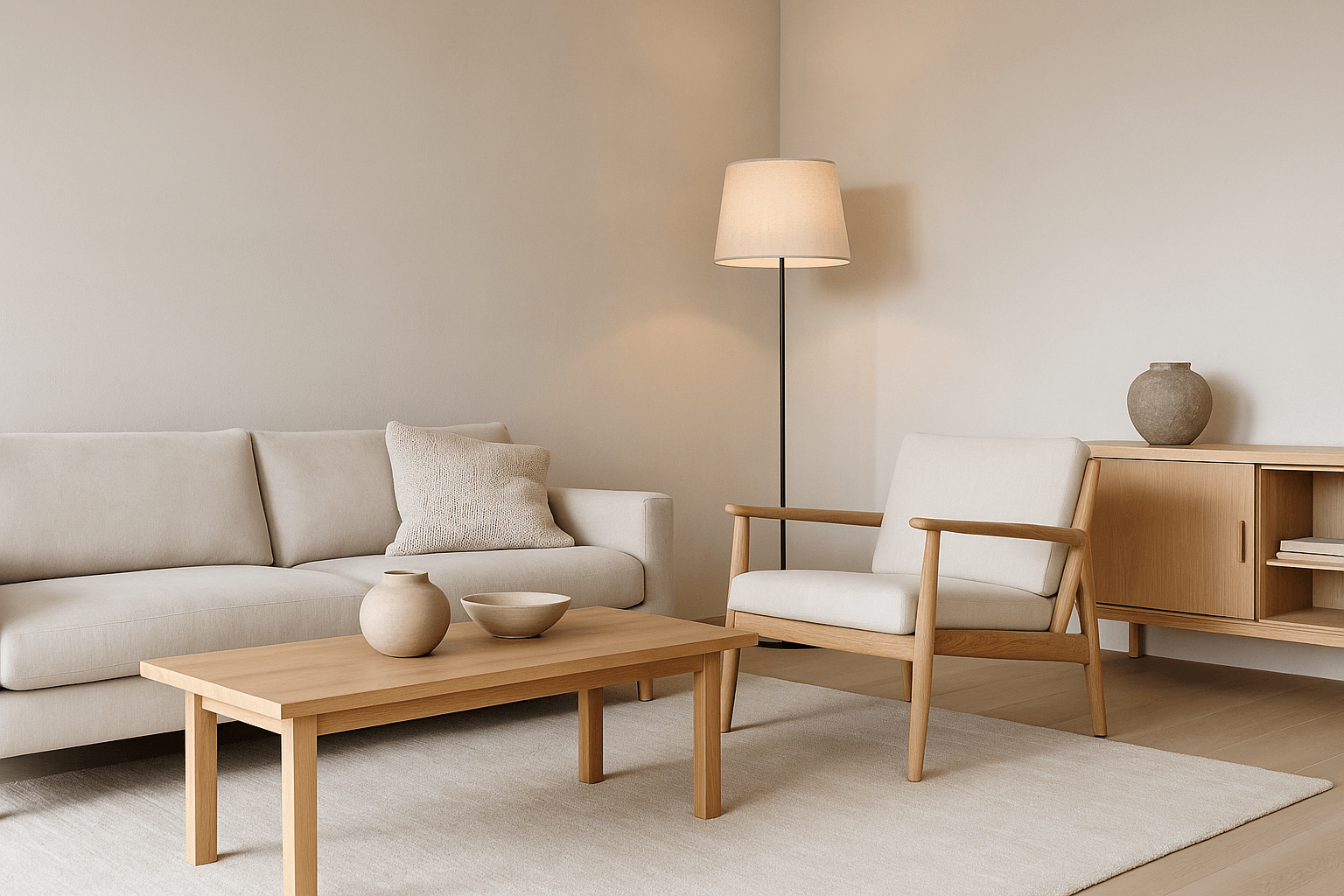The Case for Natural Materials in a Minimalist Home
Minimalist interior design is often characterized by simplicity, restraint, and clean lines. But what gives minimalist spaces warmth, soul, and character is the thoughtful use of natural materials. In a world increasingly saturated with synthetic surfaces and fast furniture, turning to wood, stone, wool, clay, and linen can transform a sterile space into a grounded sanctuary.
Using natural materials is not just an aesthetic choice—it's a philosophy that aligns beautifully with minimalism's values: authenticity, intention, and sustainability.
The Emotional Power of Natural Textures
Unlike synthetic materials, natural ones are tactile, imperfect, and alive. They invite touch. They age beautifully. They often come with subtle variations in tone and grain, which add visual depth to even the simplest room.
When your space is pared down to just a few items, the texture and materiality of each piece matters more than ever. Natural materials help you express warmth and richness without clutter.
Common Natural Materials That Elevate Minimalist Interiors
1. Wood
Wood is the backbone of many minimalist designs—especially in Scandinavian and Japandi styles. Light woods like oak and ash create a bright, soft atmosphere, while darker woods add contrast and visual weight.
Use it for:
-
Coffee tables and chairs
-
Flooring and shelving
-
Wall panels and cabinetry
2. Linen
Linen offers a relaxed, organic softness. Its slight wrinkles and breathable texture are perfect for curtains, throw pillows, and bedding.
3. Clay and Ceramics
Hand-thrown ceramic pieces bring an artisanal, earthy feel. Vases, dishes, or pendant lights made from clay add sculptural interest without visual clutter.
4. Wool
From chunky knit throws to flat-woven rugs, wool brings a sense of coziness. It's durable, insulating, and perfect for layering into neutral spaces.
5. Stone
Marble, travertine, and even rough slate can add a sense of timeless solidity to a minimalist home. Whether polished or raw, stone surfaces create contrast and structure.
6. Rattan and Cane
Often used in lightweight furniture, these woven materials add a handcrafted, textural element while maintaining airiness and light.
Why Natural = Sustainable
Natural materials tend to be:
-
Biodegradable
-
Long-lasting
-
Timeless in aesthetic
-
Free from toxic finishes or coatings
By choosing fewer but better-crafted items made from honest materials, you're participating in a more mindful and sustainable design practice.
Tips for Incorporating Natural Materials
-
Don’t mix too many tones or textures at once. Keep it cohesive and calm.
-
Layer soft with hard (e.g., linen curtains with a stone coffee table).
-
Let materials speak for themselves. Skip unnecessary embellishments.
-
Choose handmade over mass-produced when possible.
-
Let wear and patina show—it adds authenticity.
Final Thoughts
Minimalism isn’t about eliminating character—it’s about amplifying what matters. By using natural materials, you invite warmth, tactility, and integrity into your home. These materials ground your space, anchor your senses, and remind you that beauty often lies in simplicity and imperfection.
In a minimalist home, natural materials do the talking—quietly, but with impact.
















